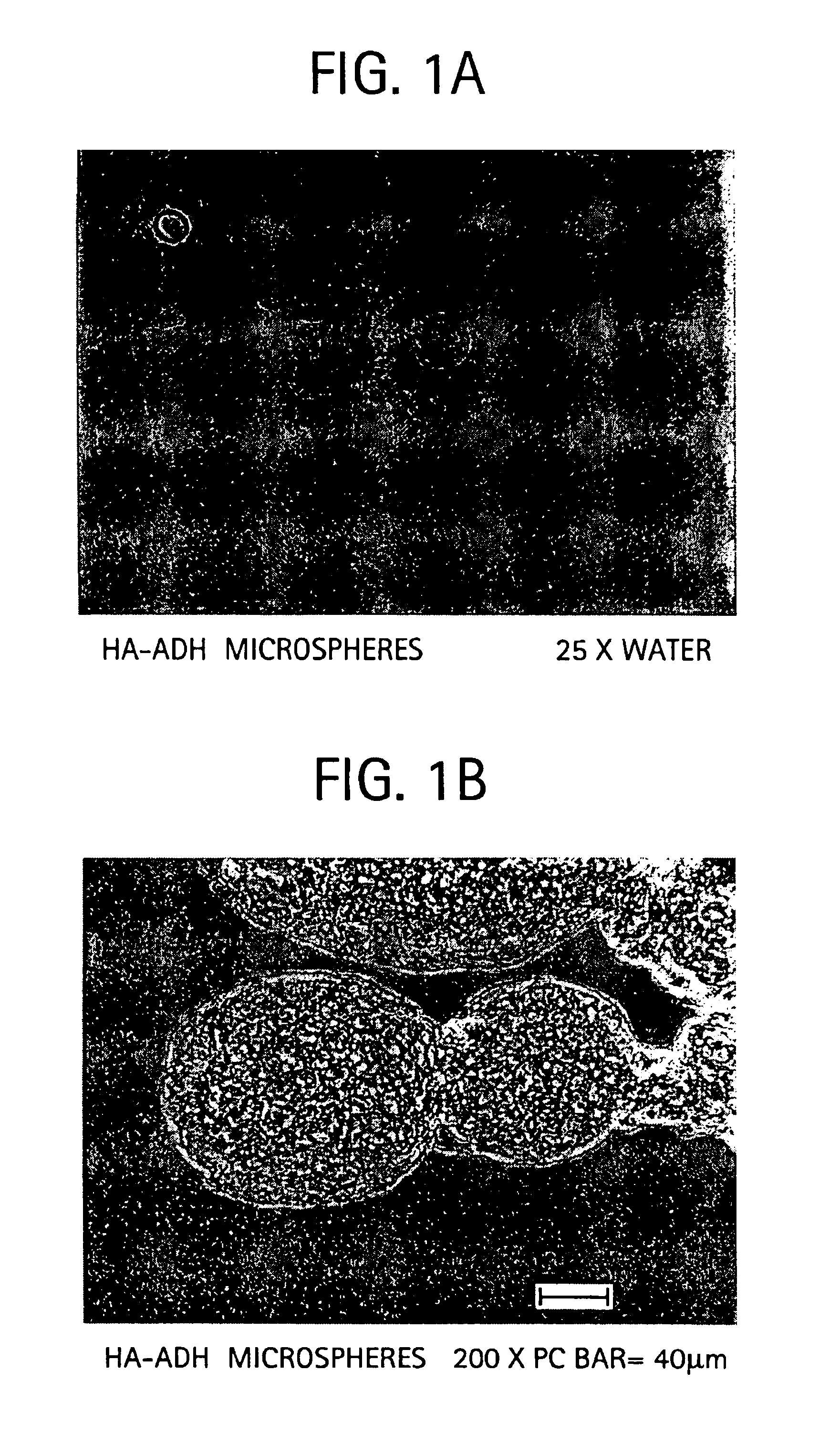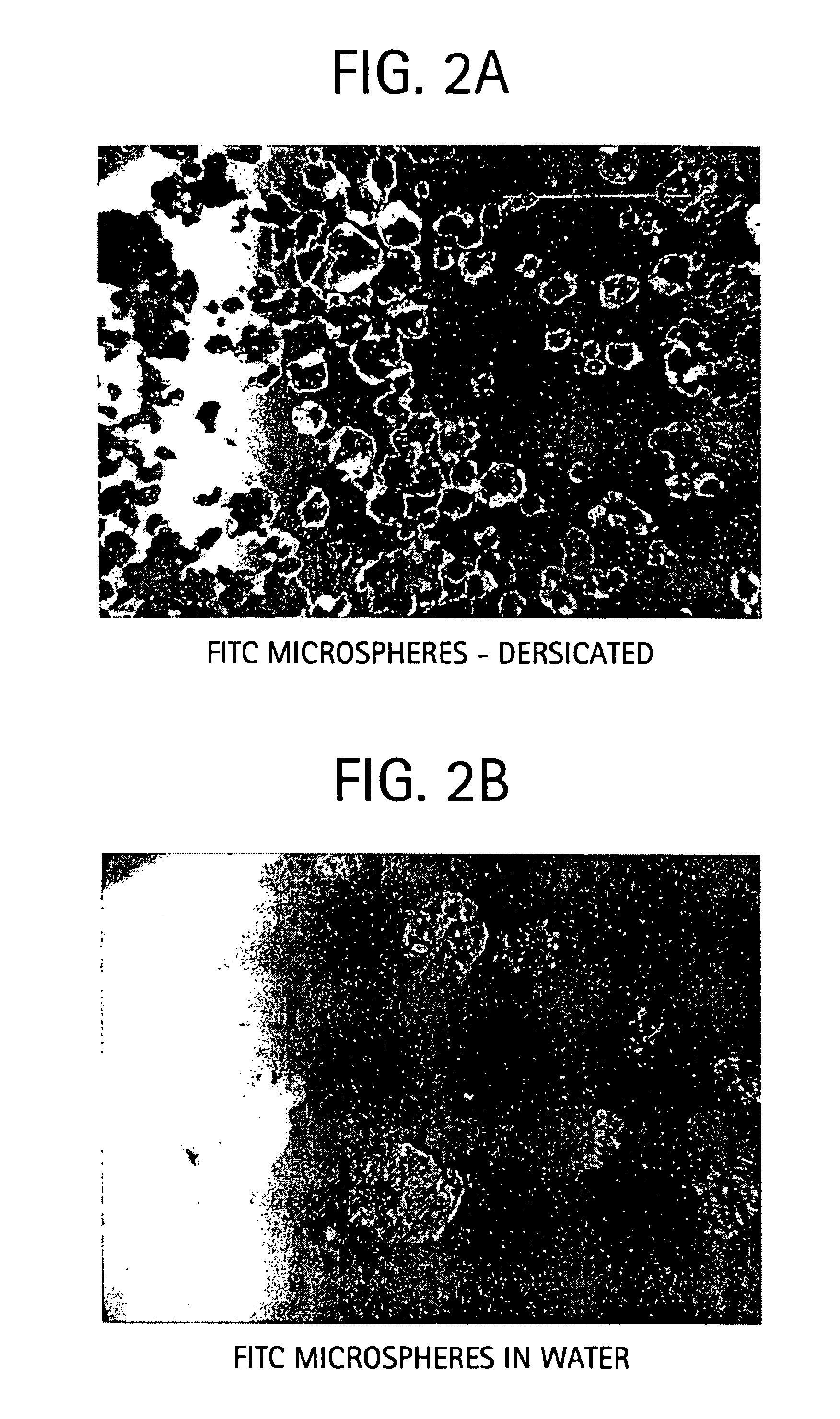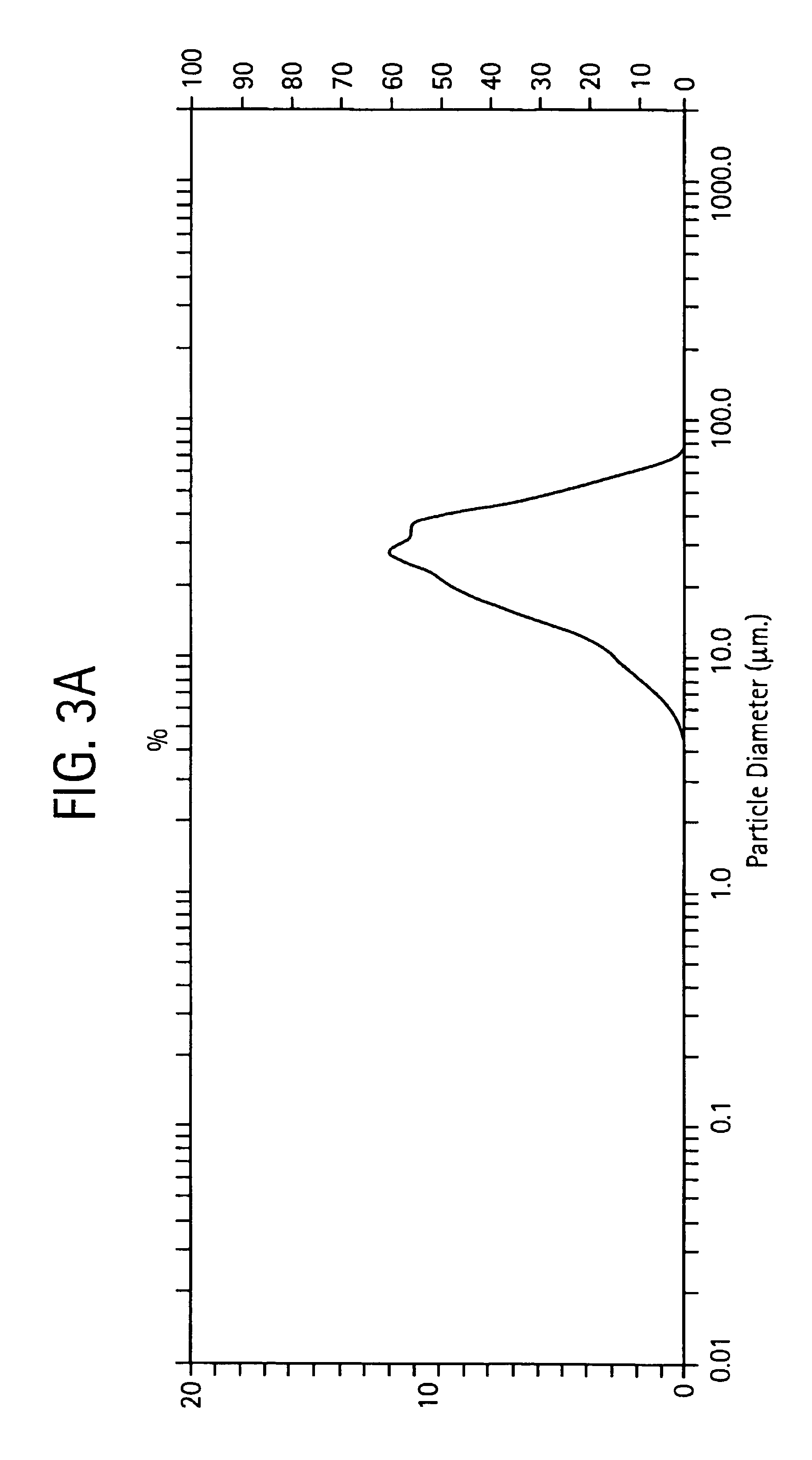Sodium hyaluronate microspheres
a technology of sodium hyaluronate and microspheres, which is applied in the field of microspheres, can solve the problems of large decrease in the solubility of solutes, inability to achieve complete separation of residual solvents with this emulsion/solvent extraction method, and undesirable presence of dmso, ethyl acetate, and n-hexane in compositions to be administered to humans or animals
- Summary
- Abstract
- Description
- Claims
- Application Information
AI Technical Summary
Benefits of technology
Problems solved by technology
Method used
Image
Examples
example 1
Preparation of HA Microspheres
[0060]One opening of a 500 ml organic reaction kettle (with interchangeable covers and four openings) was fitted with a safe-lab stirrer bearing. Six-hundred mg (1.44 mmol) of sodium hyaluronate (HA), 378 milligrams (2.16 mmol) of adipic dihydrazide (ADH), and 100 ml of water were placed in the kettle. The HA and ADH were completely dissolved in the water, resulting in the formation of a viscous liquid with a pH of 6 to 7. Two-hundred seventy-eight mg (1.44 mmol) of 1-ethyl-dimethylamino-propyl carbodiimide (EDCI) in 10 ml of water was added to the kettle. The mixture was stirred for five minutes.
[0061]One-hundred ml of toluene solution containing 1.5% w / v Span 60 was added to the kettle and an emulsion was formed by vigorous stirring at 800-1000 rpm. After the emulsion was formed, the pH of the suspension was decreased to between 4 and 5 using 1N HCl. The crosslinking reaction was continued for six hours. The pH was then raised to between 7 and 9 using...
example 2
Preparation of FITC-labeled HA Microspheres
[0064]Microspheres containing FITC-labeled bovine serum albumin (BSA) were prepared for studies of release of this marker protein from the spheres under various conditions. Essentially, experimental conditions were similar to those described in Example 1, except for the addition of FITC-labeled BSA to the HA solution, at a concentration of 10 mg / 100 ml HA solution. After dissolution and addition of all materials, polymerization was effected as described. The microspheres were thereafter washed by repeated sedimentation and resuspension in isopropyl alcohol. The labeled microspheres were recovered by sedimentation and allowed to dry in an oven for 24 h at 37° C.
example 3
Determination of Microsphere Size Distribution
[0065]Particle size distribution was determined using a Malvern Mastersizer S instrument, operated at ambient temperature, after adjusting the particle suspension obscurescence to approximately 10%.
Example 4
The Effect of pH on the Crosslinking Rate
[0066]The effect of pH on the crosslinking rate of sodium hyaluronate (HA) with adipic dihydrazide (ADH) in the presence of 1-ethyl-dimethylaminopropyl carbodiimide (EDCD was determined at room temperature. The results of the experiment are illustrated in Table 1. Sodium hyaluronate and adipic dihydrazide (in the amount shown in Table 1) were dissolved in water, and EDCI (in the amount shown in Table 1) was added to the mixture. The molar ratio of HA to ADH to EDCI was approximately 1 to 1.5 to 1, respectively. The pH was adjusted to either 10, 9, 8, 7, 6, 5, 4, or 3 with dilute NaOH or HCl. Crosslinking reactions were continued for 1, 12, and 24 hours and at each time point the viscosity of th...
PUM
| Property | Measurement | Unit |
|---|---|---|
| pH | aaaaa | aaaaa |
| pH | aaaaa | aaaaa |
| diameter | aaaaa | aaaaa |
Abstract
Description
Claims
Application Information
 Login to View More
Login to View More - R&D
- Intellectual Property
- Life Sciences
- Materials
- Tech Scout
- Unparalleled Data Quality
- Higher Quality Content
- 60% Fewer Hallucinations
Browse by: Latest US Patents, China's latest patents, Technical Efficacy Thesaurus, Application Domain, Technology Topic, Popular Technical Reports.
© 2025 PatSnap. All rights reserved.Legal|Privacy policy|Modern Slavery Act Transparency Statement|Sitemap|About US| Contact US: help@patsnap.com



